3 Steps Toward A Conscious Closet: How Photojournalism Led to My Ethical Fashion Commitment
January 12, 2018
“So I have recently purged my entire closet and am really trying to have a more minimalist mindset. However, I am on a pretty tight budget. I love love love clothes and fashion and want to buy things that will last. Being on a budget though can be tricky. Any advice?”
I read this message from my sweet friend Kayla (queen of Santa Cruz photo spots!) this morning and it’s not the first question I’ve been asked on this topic (many have seen my overuse of the hashtags #ethicalfashion and #minimalism). Yay for college students making conscious choices! I’ve been meaning to answer this for a while, so much so that I’ve had this “Ethical Apparel” note that has been sitting as a blog draft on my laptop for ages (and have been procrastinating posting because I feel as if it should live not on my wedding photography blog but on praisesantos.com (or should I go with praaaise.com or praiselynn.com or girlwholovesTuesdays.pizza? Haha ok too many parenthetical thoughts here. Must. Stop.) but yo, that site isn’t live yet so here on ComePlum it will be!) so I know I needed to post this today.
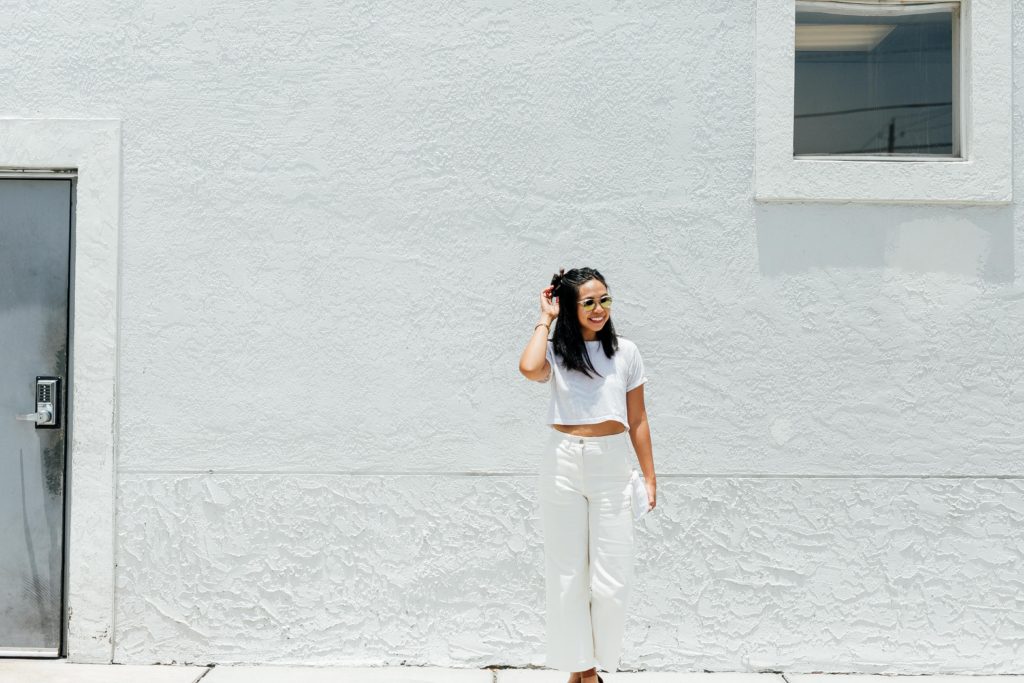
Loving the sun + The Consistency Project vintage crop top with these Everlane wide-leg cropped pants and these Warby Parker glasses
I remember first being intrigued by socially impactful goods when my sister bought me a FEED bag in 2006. The purchase of that canvas bag fed 100 people (and also made me look hellah well-traveled as I used it to carry my textbooks in college). Fast forward to 2013, I wanted to learn from a business that was impactful so I fundraised money to become a photo fellow with the social enterprise jewelry company Soko (the first of many photojournalistic projects). I lived in Nairobi, Kenya for 3 months telling the story of how business could positively impact the life of artisans. My lens and I saw these skilled creatives who were recycling animal horn into rings, skillfully welding brass into earrings, and employing their friends and neighbors in the process.
I couldn’t unlearn it.
I couldn’t unsee it:
The choice of where and what I buy impacts people.
This was the start of a mind shift:
My style doesn’t need to be gratifying;
My style needs to be sustaining.

At our ethical fashion non-engagement shoot, I loved keeping with photographer Jessica Shae’s vision of a flowy dress with this find from Crossroads Trading. Joseph’s Kalimade jacket is locally made. Also Soko earrings, yes!
There has been a lot of learning about conscious style and minimal fashion over the past 5 years, but I’ve been able to boil it down to something catchy and I’m titling it, 3 Steps Toward A Conscious Closet:
Step 1: Determine Essential vs. Non
So I live in shotgun (& supercute) 1910 apartment in San Francisco. My room is 7-feet by 7-feet and my closet? Barely 3×3! This has forced me to keep only the essentials. I don’t have enough real estate for anything else. Also, I find myself living out of suitcases for many weeks out of the year so I now that I can survive with all I need in a carry-on.
As you clear your closet ask,
“If I haven’t used it in 3 months, do I really need it?”
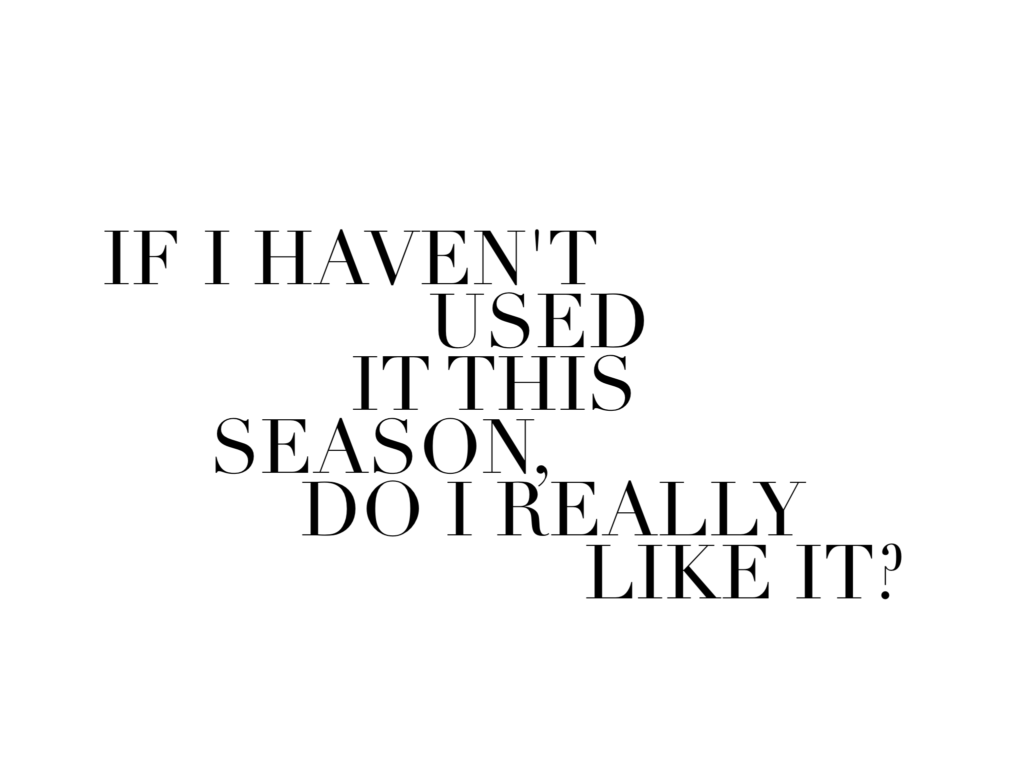
If nah, then t o s s it, sister.
And a creative way to give those things away?
1) Donate to your local thrift shop or ship it for free using Give Back Box
2) Host a clothing swap with your buds or find one in your city
3) Resell your clothes at a consignment store or on Poshmark
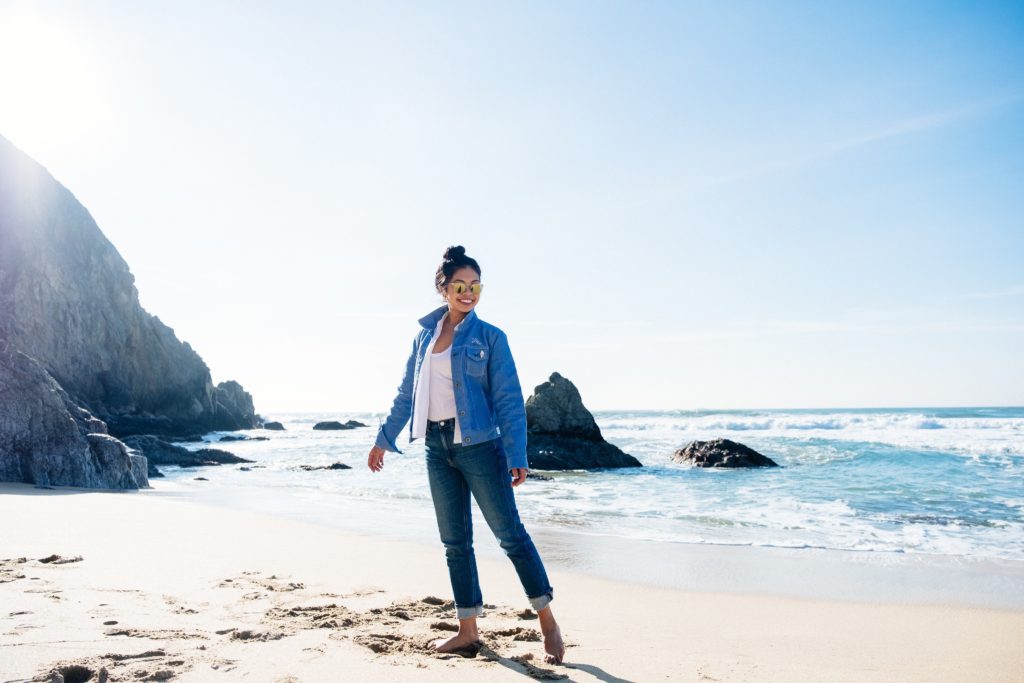
These Everlane jeans, top, and button-up pair well with this second hand Guess Jacket from local vintage shop, “No.” (the actual name of the shop is “No.” to make that clear, ha.)
Step 2: Check In Before You Check Out
So great, you’ve cleaned your closet. Go you. But stay slow and low; don’t be too quick to fill the gap! Before you hit buy at your favorite online retailer ask yourself,
“Am I relying on wearing something new to feel good?”
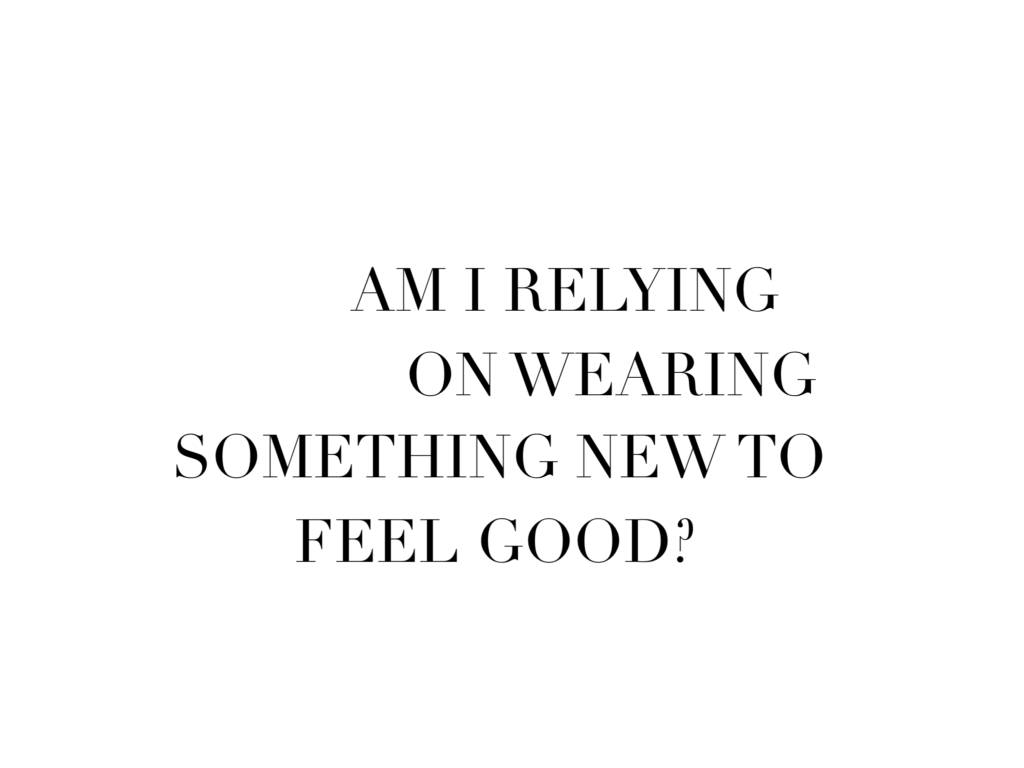
Friend, don’t feel guilty if it’s a yes. I’m for self-care and I know shopping can do the trick. I love me something fresh finds too tbh. But instead of purchasing a new wardrobe, can you achieve the same result by adding a fair-trade accessory or second-hand scarf?
Hmmm, ponder-ponder.
Also before you buy, pause and think, “Will I love this item more than the other ones you already have?” In her podcast interview on Conscious Chatter, ethical fashion girlboss/blogger queen Anna Lisa of Recess City says to ask yourself, “Is it my first grab?” aka if you’re in the store and you buy a pair of jeans will it be the one you want to grab first out of your options at home? If there’s another pair you’d grab first, you probably don’t need this new one. Stay away from trends, gravitate toward items that you’ll like year after year.
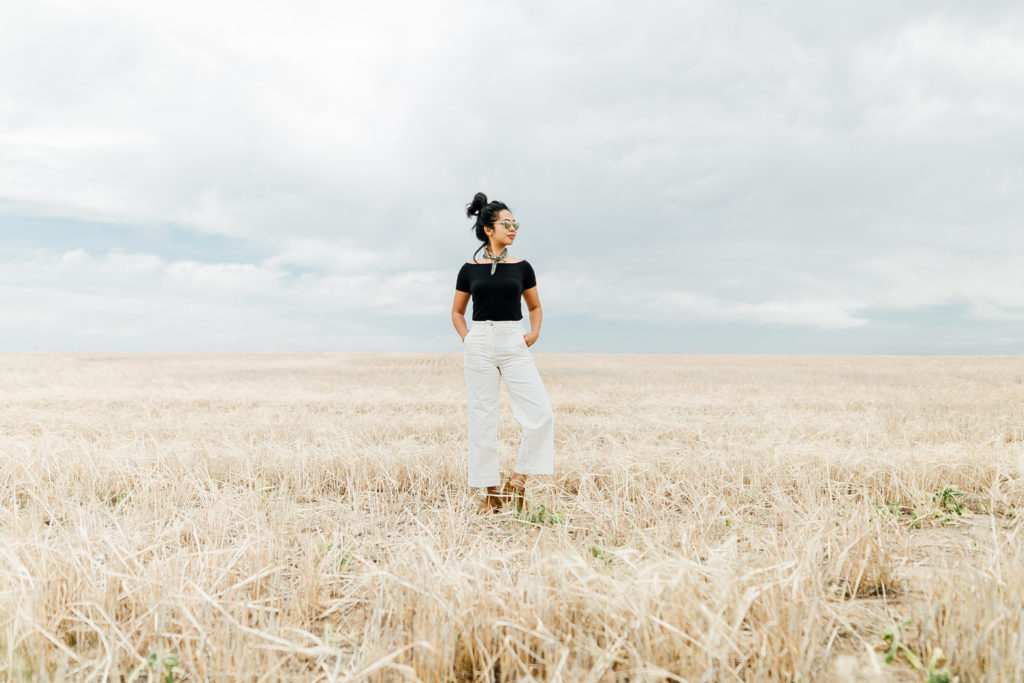
The Everlane Wide Leg crops are no-joke. I like wearing them formal & casual.
Step 3: Buy Essential, Buy Ethical
So, you’ve asked yourself the right questions and yup, you still need clothes. I’m not vouching for extreme minimalism (though you’ll see in these photos, I only use a few pieces over and over!) so here’s how you can restock your closet in a mindful way:
1) Extend the life of clothing by buying second hand.
Extending the life of clothing is one of the most environmentally friendly things you can do. My friend Natasha of The Consistency Project says, “the average person buys 60% more clothing per year and uses it half as long as we used to 15 years ago. Now, if you extend the life of clothing for 3 months it would reduce the carbon and water footprint and the creation of waste by 5% to 10%. Basically, recycling 2 million tons of clothing a year equates to taking one million cars off the streets. Now, consider the impact buying secondhand has. Not only are you keeping clothing out of landfills, you’re prolonging a garment’s lifespan and you can still fulfill our modern trendy needs all while reducing your carbon/water footprint.”
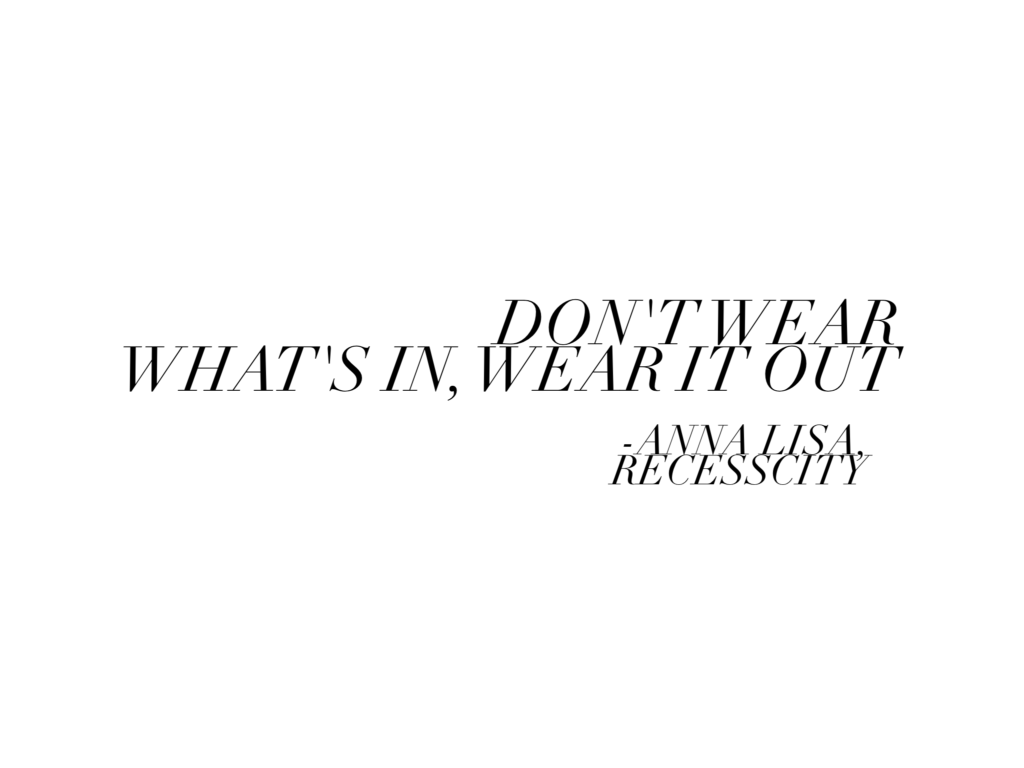
Favorite local second-hand/consignment shops:
The Consistency Project | 14th & Folsom
Crossroads Trading | locations in the Castro & Lower Pac Heights
No. | 14th & Valencia


Strolling through the Sunset District in my Reformation jumpsuit, Crossroads training jacket, and Starch Slides
2. If you’re going to buy new, buy from brands that are good for people and the planet.

In an Everlane turtleneck paired with The Consistency Project vintage Levis that I cropped
Ethical Fashion is a sector that is growing everyday (hooray!) and I don’t claim to know all the great go-to brands. An online resource that has helped me is the blog The Good Trade
& the app Good On You.

I love these Everlane Oxfords paired with their blue wide-leg cropped pants and this Viscera top. Also this Rains backback from The Voyager Shop is waterproof and ethically made in Europe.
In general, USA-made clothing brands tend to be transparent and of high quality.
In the meantime here are my favorite in-person (SF/Bay Area) and online stores (and some yummy discounts with them too!):
Everlane | 18th & Folsom
Reformation | 20th & Valencia
The Voyager Shop | 14th & Valencia
Soko | 16th & Arkansas
Viscera | Downtown Oakland
Warby Parker | Hayes Valley
Amour Vert | Hayes Valley
Online
Girlfriend Collective
Brevity
Starch Slides
Nisolo | $20 off
Vetta Capsule | $20 off
Pact Apparel | 20% off
3. Purchase Multi-Purpose Pieces

I used this Everlane sweater dress during my travels to North Carolina. I also used this simply as a sweater by tucking the bottom half under and pairing it with pants & a restyling it with a second-hand scarf.
In SF, we have to be masters of layering. I love pieces that can double as a vest over pants but also as a vest-dress. One of my Vetta jumpsuits is a two piece set that I use together or just as a top, pant, or cardigan. I have pants that I can dress down for a beach day but also can dress up for dinner with a pair of heels. Some of my Everlane dresses, I fold in half and wear them as tops. Think creatively with your layers!

I loved pairing this Crossroad trading jacket with this Vetta vest, and Everlane v-neck dress used as a top when I was waltzing around Hayes Valley on a foggy day with my gal pals. This vest from Vetta can be worn as a dress when all buttoned up too!
Clothesing (I had to fit a pun in here somehow) Thoughts:
Take baby steps; your closet doesn’t have to be completely minimal or ethical overnight.
I’ve been working at this for the past 5 years and sometimes you are forced to buy things that you’re unsure of where they come from (can I get a witness about bridesmaid dresses? Hopefully Ethical Weddings will get lit and more ethical options will be available soon!)
Buy only what you need. Buy ethically.
In this simplicity is more freedom.
Limiting shopping choices refines taste.
Use things well and thoroughly.
Less fad, more choice.
Conscious consumers: conscious closets.
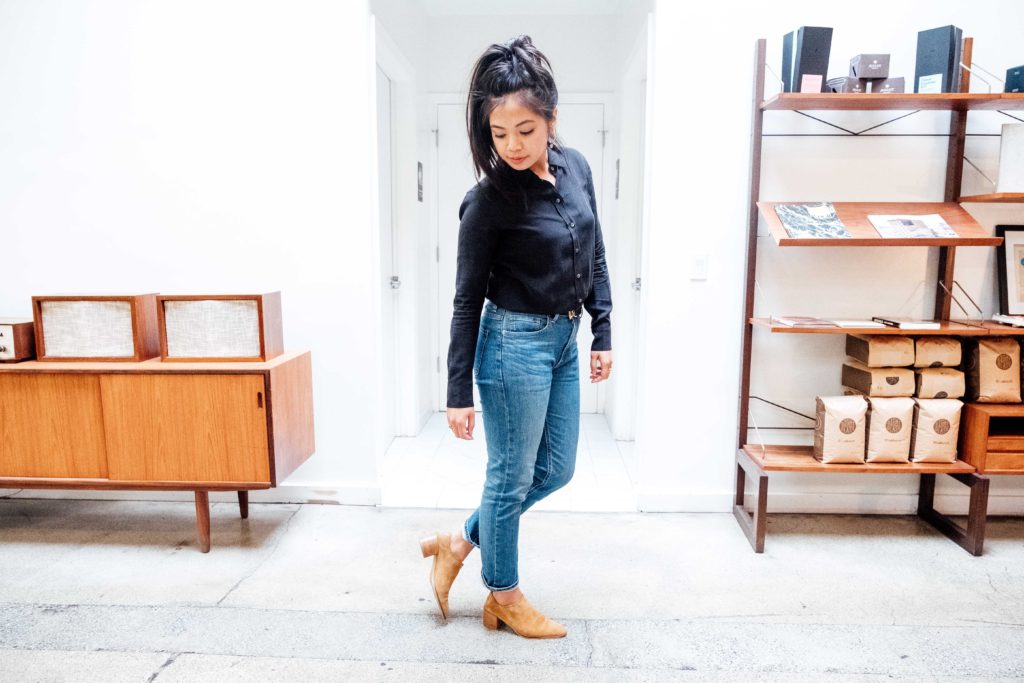
These mustard Everlane booties have been a fun addition to the closet. This black Everlane button up I’m all for too. These Everlane jeans though I’m only partially a fan of. A more thorough review on denim later!
